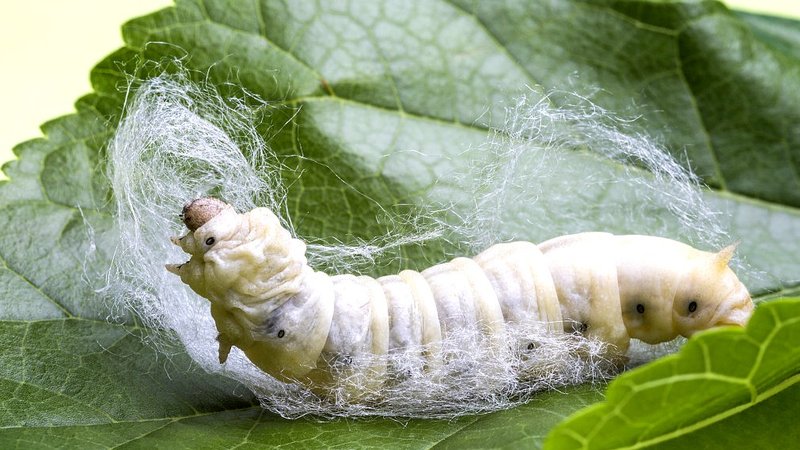
Understanding Silkworm Needs
Before you even think about transport, it’s important to understand what silkworms need. These little guys are the larvae of the *Bombyx mori*, and they have specific requirements to stay healthy. Most importantly, they thrive in conditions that mimic their natural habitat—warm, humid, and with plenty of food.
You might be wondering why this matters for transport. Well, the better you understand their needs, the easier it will be to create a suitable transport environment. Silkworms are sensitive to temperature fluctuations, and a sudden drop can stress them out or even lead to death. Ideally, they like to be around 70°F to 80°F (21°C to 27°C). Keeping them in this range during transport is key to their health.
Additionally, silkworms require humidity. Dry conditions can cause them to dehydrate, so ensuring they have some moisture during the transport is essential. Use materials that retain moisture but avoid direct contact with water, which can drown them. So, think of a comfortable camping trip—some warmth, a bit of humidity, and plenty of food will go a long way!
Choosing the Right Container
Now that we understand their needs, let’s talk about the perfect container for transport. Not all containers are created equal, and the right one can make a huge difference in keeping your silkworms safe and sound during their journey.
First, you’ll want a container that allows for adequate ventilation. Silkworms need fresh air to breathe, but you also don’t want it too drafty. A plastic or cardboard box works well; just make sure to poke some holes for air circulation. Something like a small shipping box with air holes will do the trick.
Next, consider the size of the container. It should be big enough for your silkworms to move around but not so spacious that they get tossed around during transport. Think of it like a cozy car ride—enough room to sit comfortably but not so much that they roll around.
Finally, don’t forget about lining the bottom of the container. Using soft paper towels or a layer of shredded paper can provide cushioning and help maintain humidity. This little touch goes a long way in creating a comfy environment for your silkworms.
Packing Techniques
Once you’ve got your container ready, it’s time to talk about packing your silkworms. You can’t just toss them in and hope for the best! Here’s a simple step-by-step method to ensure they are packed safely.
1. Prepare the Bedding: As mentioned, start with a soft layer of paper towels or shredded paper at the bottom of the container. This acts like a comfy mattress for your silkworms.
2. Add Food: If you’re transporting them longer than a few hours, consider adding some of their favorite food—mulberry leaves, for instance. This way, they have something to munch on during the trip.
3. Place the Silkworms: Using a spoon or your hands (make sure they’re clean!), gently place the silkworms on top of the bedding. Be careful not to overcrowd them; give them enough space to breathe and move.
4. Seal the Container: Once everything is in, close the container but ensure there’s still some air circulation. You might want to cover the top with a breathable fabric or mesh to prevent escape while allowing airflow.
Packing your silkworms well can reduce stress during transport and keep them happy and healthy.
Temperature Control During Transport
Temperature is a big deal when it comes to transporting silkworms. Just like you wouldn’t want to be stuck in a car on a hot day without air conditioning, your silkworms need a stable temperature, too. Here are some strategies to maintain that perfect warmth:
– Use Insulated Containers: If the weather is too cold or too hot, consider using a cooler or insulated box to help regulate the temperature. You could also wrap the container in a blanket to keep the warmth in.
– Monitor the Environment: If you’re driving, keep an eye on the temperature inside your vehicle. It’s worth investing in a digital thermometer to check that things stay comfortable.
– Consider Ice Packs or Heat Packs: For longer journeys, you may want to use ice packs or heat packs to help regulate temperature. If you go the ice pack route, make sure they are wrapped up so they don’t come into direct contact with the silkworms.
This attention to temperature will help keep your silkworms from going into shock, making their journey less stressful and more comfortable.
Duration and Timing of Transport
The duration of your transport matters a lot in keeping silkworms safe. Ideally, transport should be kept to a minimum. The shorter the journey, the less stress they’ll experience. So, if you can, try to plan the trip at a time when you know you won’t encounter delays.
If you’re traveling for more than three hours, consider breaking the journey into segments. You might stop along the way to check on the conditions inside the container, ensuring that everything is still in order. Make this like a well-planned road trip—stop to stretch your legs and check on your passengers!
You could also think about the season. Try to avoid heat waves or chilly winter months when temperatures can fluctuate drastically. If you know you need to travel during a less-than-ideal time, take extra precautions to keep your silkworms warm or cool as needed.
Unpacking and Settling In
Once you arrive at your destination, the journey isn’t quite over for your silkworms yet. Properly unpacking them is just as important as the preparation before the trip.
Start by bringing the container to a quiet area where it won’t be disturbed. Open it gently and give your silkworms a moment to acclimate to their new surroundings. You might be tempted to dump them out, but take it slow.
Next, provide them with fresh food and a suitable habitat. Make sure their new home mimics their previous environment as closely as possible. Think comfy, warm, and humid! By setting them up properly, they’ll be more likely to adjust without too much stress.
After all that effort, give yourself a pat on the back! You’ve just transported silkworms safely over a long distance, which is no small feat.
Common Challenges and Solutions
As with any journey, you might encounter some bumps along the way. Here are a few common challenges and how to tackle them:
– Dehydration: If you notice your silkworms looking sluggish or dried out, it might be because they didn’t have enough humidity. Always check the bedding material for dampness before you leave.
– Temperature Fluctuations: If it’s too hot or cold, you might need to adjust by adding ice packs or heat packs, depending on the conditions. Always monitor the temperature if you have a thermometer handy.
– Overcrowding: Packing too many silkworms in one container can lead to stress. Always give them enough space to move and breathe. If you’re transporting a large quantity, consider splitting them into multiple containers.
Addressing these challenges quickly and calmly will help ensure your silkworms have a smooth transition.
In conclusion, safely transporting silkworms over long distances requires careful planning and attention to their needs. By choosing the right container, maintaining proper temperature, and providing adequate food, you can help ensure they arrive at their new home healthy and happy. It’s a bit like sending your kids off to summer camp—you just want them to have a great experience! So, next time you need to transport silkworms, keep these tips in mind, and you’ll be a pro in no time.

